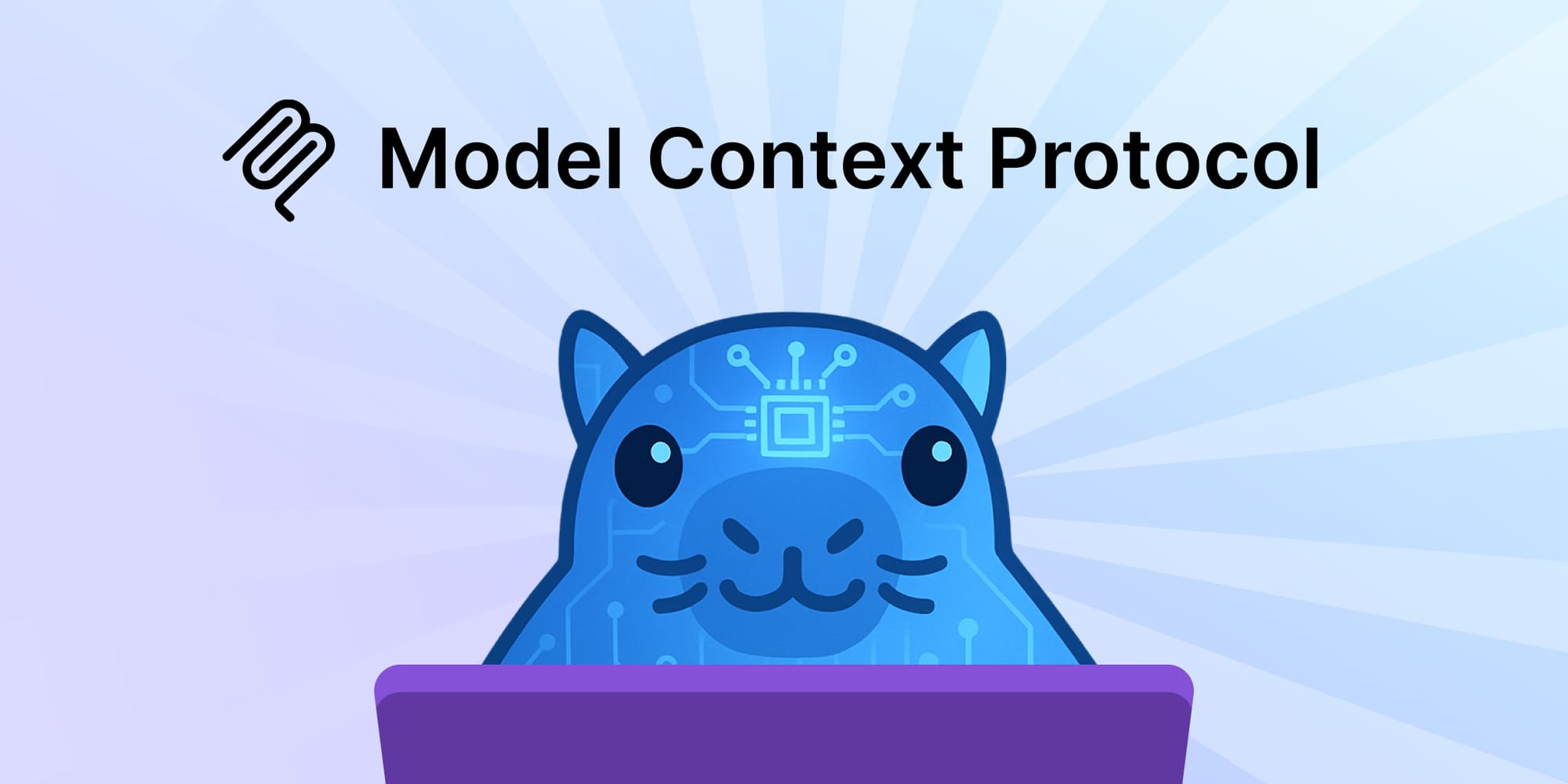Blockscout MCP: Connecting AI to Onchain Data
Learn how Blockscout MCP bridges AI and blockchain by connecting directly to block explorers.See architecture, setup, and use cases for querying onchain data across EVM chains.

In Web3 and AI, accessing and analyzing blockchain data has often been a fragmented process. Developers and AI agents sometimes struggle with different kinds of APIs, chain-specific quirks, and the lack of contextual understanding.
The Model Context Protocol (MCP) is a game-changing standard that connects AI-powered tools directly to data sources. With Blockscout supporting over 3,000 EVM-compatible chains and integrating its own MCP server, it provides a powerful bridge that enables intelligent agents to query, reason about, and act on on-chain data seamlessly.
This guide explores how Blockscout MCP works, its architecture, setup instructions, and practical use cases. Whether you're a developer building AI-driven dapps, a researcher analyzing multichain trends, or preparing for a hackathon, you'll learn how to leverage this tool to unlock deeper blockchain insights.
Understanding Blockscout MCP: A Standard for AI and Onchain Data
The Model Context Protocol serves as a standardized communication framework that enables AI models and intelligent agents to interact with external data sources and services in a structured, reliable manner. At its core, MCP addresses a critical challenge in the AI ecosystem: how to provide language models with access to real-time, domain-specific information while maintaining consistency and reliability in data exchange.
MCP operates on several key principles that make it particularly well-suited for blockchain integration. First, it establishes a universal communication standard that allows AI agents to query external systems without needing custom integrations for each data source. This standardization reduces complexity and enables rapid deployment across multiple blockchain networks and explorers.
The protocol functions through a client-server architecture where AI agents act as clients, sending structured queries to MCP servers that interface with specific data sources. These servers translate the AI's requests into appropriate API calls, retrieve the requested information, and return it in a standardized format that the AI can immediately process and understand.
Security and reliability are built into MCP's foundation. The protocol includes authentication mechanisms, rate limiting, and error handling procedures that ensure robust performance even when dealing with the high-value, sensitive nature of blockchain data. Additionally, MCP supports versioning and backward compatibility, allowing for continuous improvement without breaking existing integrations.
How Blockscout MCP Works
Blockscout MCP represents a specialized implementation of the Model Context Protocol explicitly designed for blockchain data interaction. As a comprehensive blockchain explorer, Blockscout maintains detailed records of transactions, smart contracts, token transfers, and network statistics across multiple blockchain networks. The MCP implementation transforms this wealth of information into an AI-accessible format.
The architecture begins with Blockscout's robust data indexing system, which continuously monitors blockchain networks, parsing and storing transaction data, smart contract interactions, and network events in real-time. This indexed data forms the foundation that MCP servers can query efficiently, ensuring that AI agents receive accurate, up-to-date information.
When an AI agent needs blockchain information, it sends a structured query through the MCP interface. These queries can range from simple transaction lookups to complex analytical requests involving multiple addresses, time ranges, or contract interactions. The Blockscout MCP server interprets these requests and translates them into appropriate database queries against the indexed blockchain data.
The response system is equally sophisticated, returning data in standardized formats that AI agents can immediately parse and utilize. Whether the agent needs transaction histories, token balances, contract verification status, or network statistics, the information is delivered with consistent structure and comprehensive metadata that provides context for proper interpretation.
Setting up on Claude Desktop
Let’s set up our Blockscout MCP on Claude's desktop. While it's also possible to configure the Blockscout MCP using Cursor and Gemini, for the sake of this example, we will be focusing on the user-friendly interface and features offered by Claude’s desktop.
Check out the configuration with other AI Agents here.
- Download the latest blockscout-mcp.dxt file from the GitHub releases
- Drag the .DXT file to the window to install it
- Click install.
Practical Examples with Prompts
In this section, I present three prompts designed to assess the capabilities of Blockscout (MCP) rigorously and to explore its functionality in querying blockchain data across a variety of supported Ethereum Virtual Machine (EVM) chains.
Defi Analysis
“List all the EVM-compatible blockchain networks supported by Blockscout and provide a brief description of the top five by transaction volume as of today."
From the result, we can see the top five chains by transaction volume, as well as some key trends in the EVM ecosystem.
Wallet Analysis
"Compare the gas fees and token balances for Vitalik’s address across Ethereum Mainnet, Polygon, and Base chains for the last 30 days."
Security Research
"Retrieve the smart contract source code and ABI for the Uniswap V3 factory contract on Arbitrum, and explain its key functions."
createPool, getPool, enableFeeAmount, and setOwner.Conclusion
As the Web3 ecosystem continues to expand across multiple chains and protocols, standardized tools like Blockscout MCP will become increasingly essential for developers, researchers, and analysts. The ability to query over 1,000 EVM-compatible chains through a single, consistent interface not only accelerates development workflows but also enables more sophisticated cross-chain analysis and decision-making.
With AI agents now capable of understanding transaction patterns, contract behaviors, and network dynamics in real-time, we're witnessing the emergence of truly intelligent blockchain applications that can adapt, analyze, and act autonomously across the decentralized web. This convergence of AI and blockchain infrastructure marks a significant step toward more intuitive and powerful Web3 tools that can serve both technical and non-technical users alike.

